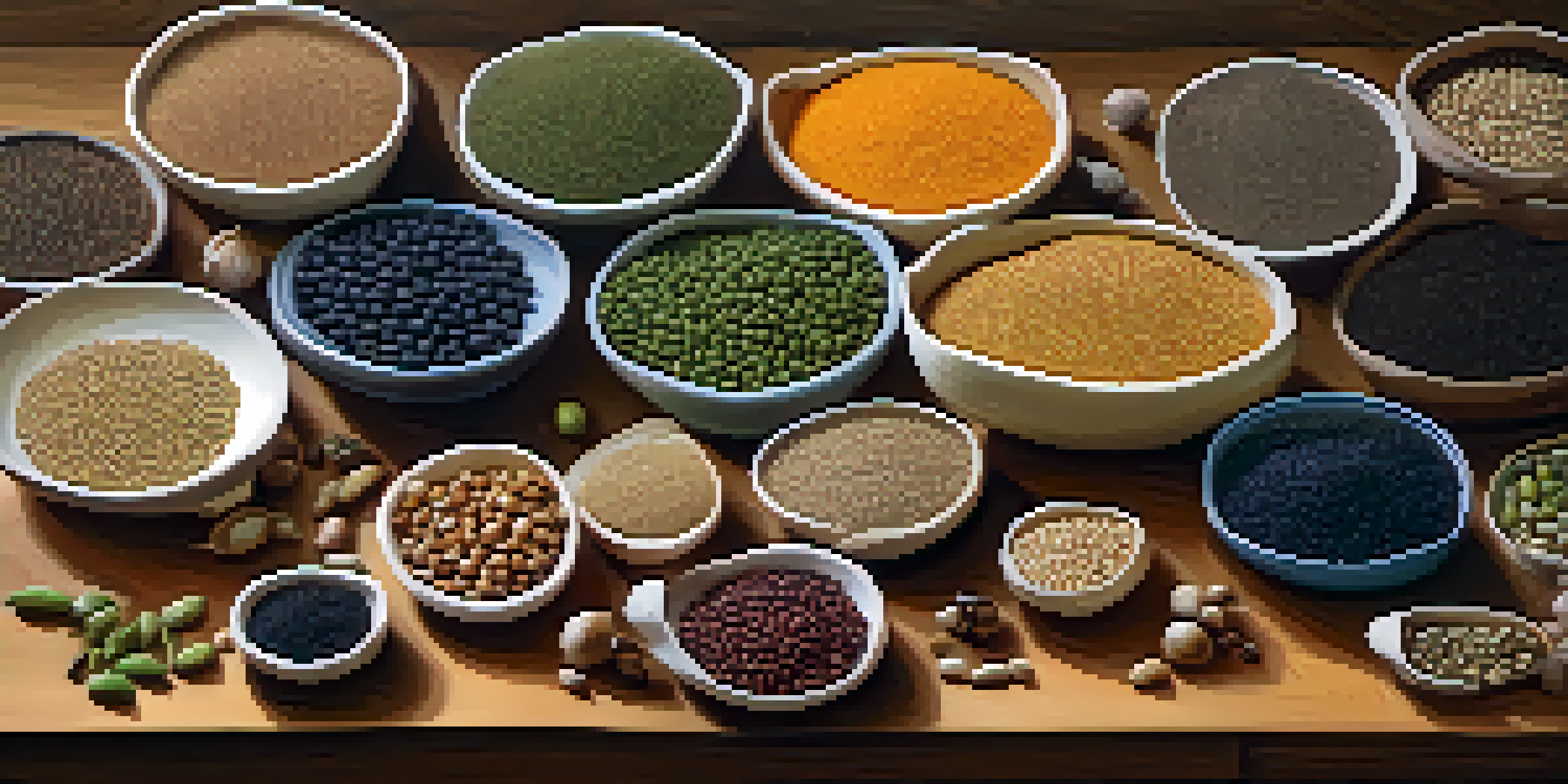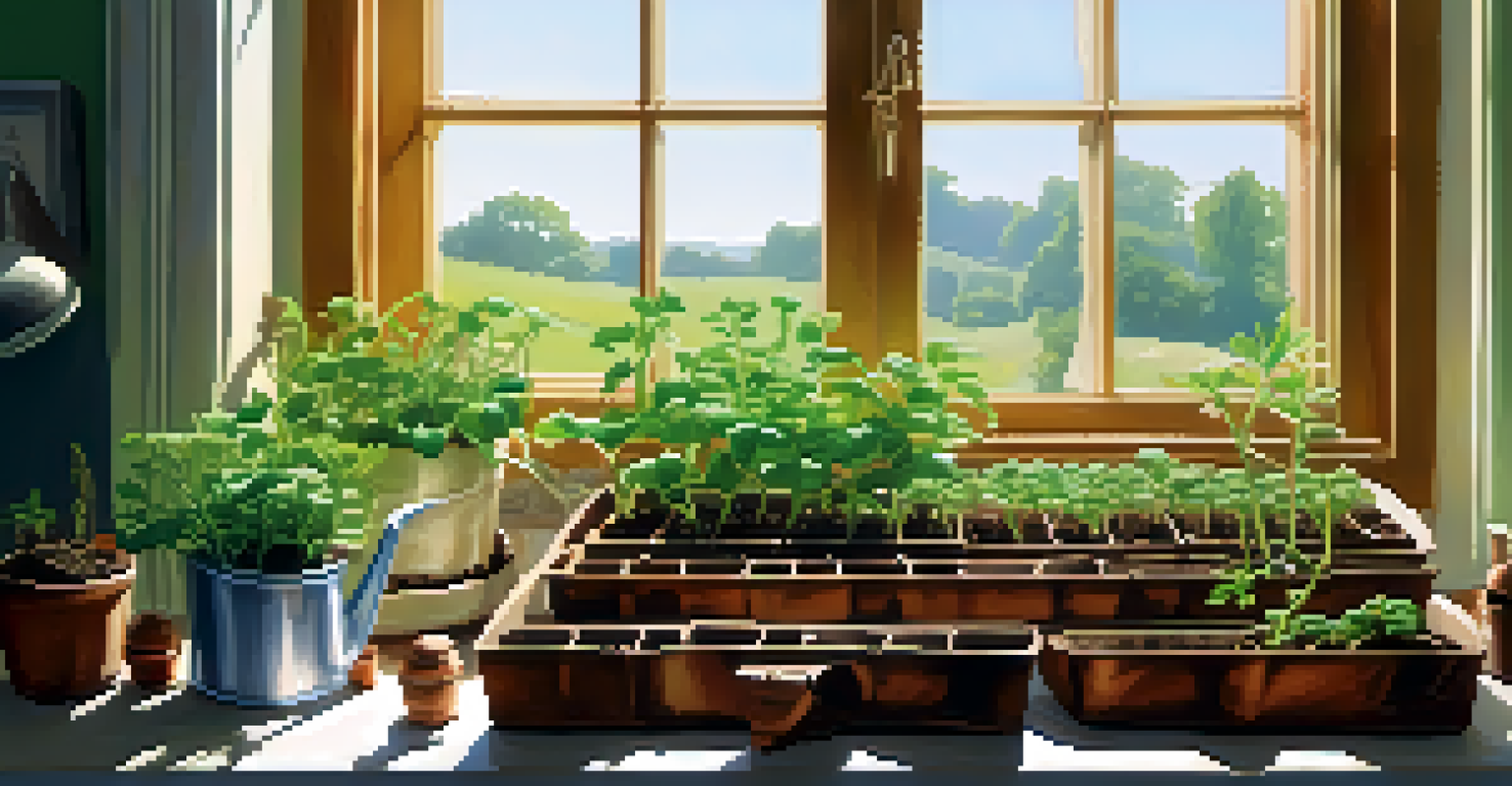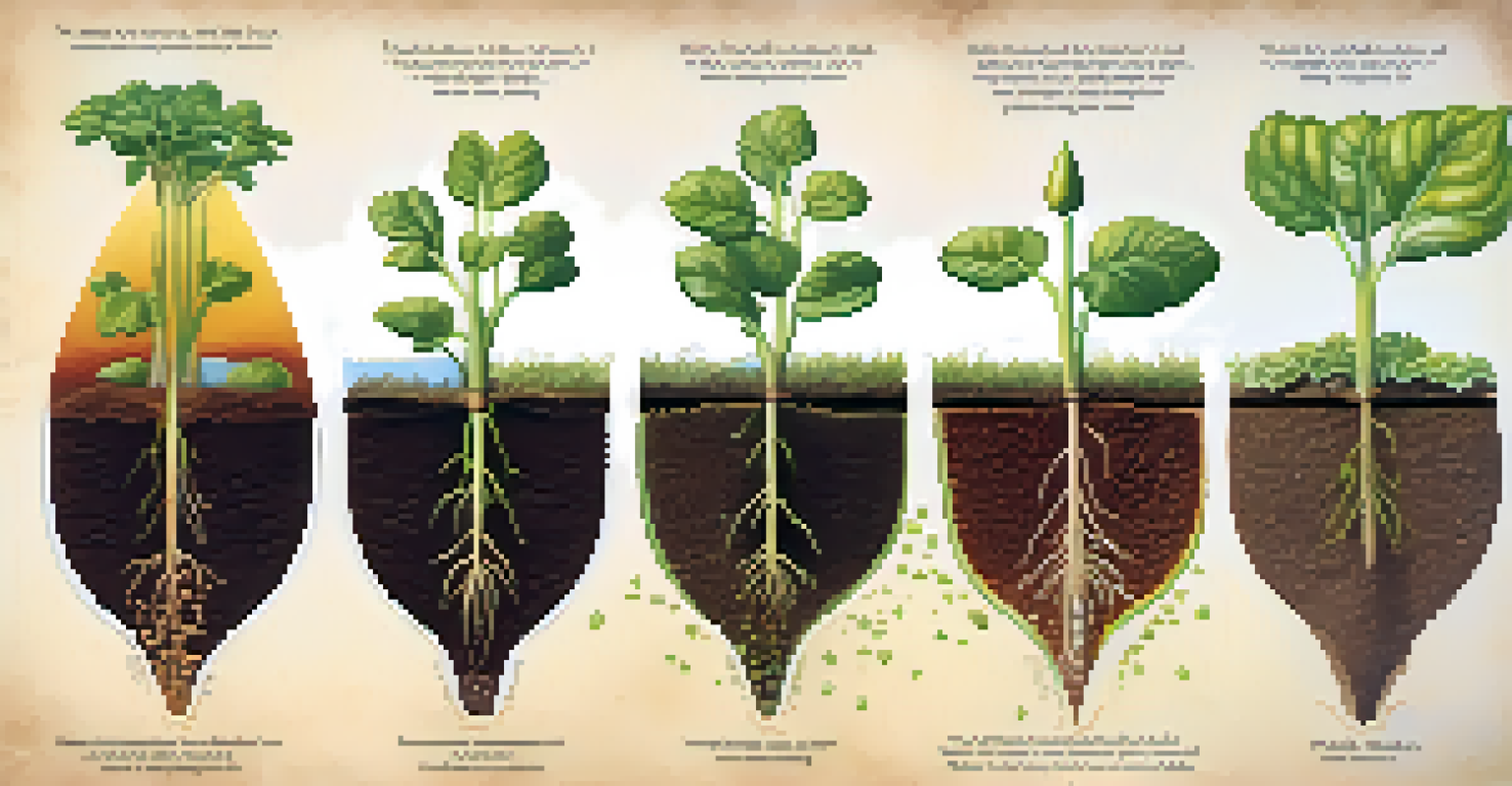Seed Germination: Tips for Successful Plant Propagation

Understanding the Seed Germination Process
Seed germination is a fascinating journey that begins when a seed absorbs water. This process, known as imbibition, activates enzymes that kick-start growth. As the seed swells, it breaks through its protective outer layer, paving the way for sprouting.
The greatest gift you can give your children is not your own riches, but allowing them to earn their own.
Understanding this process is crucial for successful plant propagation. Each type of seed has its own unique requirements for light, temperature, and moisture, which can affect germination rates. By knowing these specifics, you can create the ideal environment for your seeds to thrive.
Think of germination as a race; the right conditions allow seeds to win. If you provide the proper warmth and moisture, you're essentially giving them a head start. This understanding sets the stage for successful planting.
Choosing the Right Seeds for Germination
Selecting quality seeds is the first step toward successful germination. Look for seeds that are fresh and from reputable sources, as older seeds may have lower germination rates. It's like choosing ingredients for a recipe; the quality matters!

Consider the climate and soil conditions of your area when selecting seeds. Some plants thrive in cooler climates, while others prefer warmth. Understanding your environment allows you to pick seeds that will flourish, making your gardening experience more rewarding.
Seed Germination Basics
Understanding the seed germination process, including factors like water absorption and temperature, is essential for successful plant growth.
Additionally, think about your gardening goals. Are you aiming for a vegetable garden, a flower bed, or perhaps a mix? Picking the right seeds not only ensures successful germination but also aligns with your gardening vision.
Preparing Your Seeds for Germination
Preparation is key when it comes to seed germination. Some seeds benefit from soaking in water for a few hours to kick-start the process. This method helps soften the seed coat, making it easier for the seed to sprout, much like softening dough before baking.
Gardening is a way of showing that you believe in tomorrow.
Another technique is scarification, where you gently scratch or nick the seed coat to encourage germination. This is especially useful for hard-coated seeds, which may take longer to germinate otherwise. It’s a bit like giving them a gentle nudge to wake them up.
Lastly, consider stratification, which involves exposing seeds to cold temperatures to mimic winter conditions. This practice is beneficial for certain seeds that require a chilling period before they can germinate, ensuring a successful and timely sprout.
Creating the Perfect Germination Environment
The environment plays a significant role in seed germination. Most seeds thrive in warm, moist conditions, typically between 65°F and 75°F (18°C to 24°C). By maintaining this temperature, you can create a cozy home for your seeds as they embark on their growth journey.
Additionally, proper light exposure is essential. Some seeds need darkness to germinate, while others require light. Understanding these needs will help you position your seeds correctly, ensuring they receive the right amount of light without hindering their growth.
Choosing Quality Seeds Matters
Selecting fresh, quality seeds aligned with your local climate and gardening goals greatly enhances the likelihood of successful germination.
Lastly, ensure good drainage in your planting medium. Seeds that sit in waterlogged soil are prone to rot, which can quickly derail your germination efforts. Using seed trays with drainage holes can help maintain the right moisture levels.
Watering Techniques for Successful Germination
Watering is a delicate balancing act during the germination stage. Too little water can leave seeds dry, while too much can drown them. It's essential to find that sweet spot to keep the seeds moist without over-saturating the soil.
Using a spray bottle or a gentle watering can is a great way to keep the soil evenly moist. This method allows for controlled watering, avoiding sudden splashes that might disturb the seeds. Think of it as a gentle rain shower for your plants.
Regularly check the moisture level of the soil, especially in warmer conditions. Adjust your watering routine based on the weather and the specific needs of your seeds. Monitoring moisture can make all the difference in achieving successful germination.
Understanding Germination Timeframes
Every seed has its own germination timeframe, which can range from a few days to several weeks. It’s important to be patient and not rush the process. Just like waiting for bread to rise, good things take time, and each seed is on its unique timeline.
Factors such as temperature, moisture, and the type of seed can all influence how quickly germination occurs. Some seeds may sprout overnight under ideal conditions, while others may take their time. Keeping track of these timeframes can help you manage your expectations.
Creating Ideal Conditions
Establishing the right environment, including proper moisture, temperature, and light exposure, is crucial for encouraging seed germination.
If you’re feeling anxious about the wait, consider planting a variety of seeds with different germination times. This way, you can enjoy a staggered planting experience, with some plants growing while you wait for others to sprout.
Troubleshooting Common Germination Issues
Even the best gardeners face challenges during seed germination. Common issues include poor germination rates, mold growth, or seeds that may sprout but fail to thrive. Identifying these problems early can help you take corrective action and improve your results.
If you notice mold, it may indicate overwatering or poor air circulation. Ensure your planting medium is well-draining and provide adequate airflow to help mitigate this issue. Think of it as creating a healthy home environment for your seeds.

Lack of germination can stem from many factors, including temperature fluctuations or old seeds. If you’re not seeing the results you hoped for, examine each element of your germination process. A little troubleshooting can go a long way in achieving successful propagation.